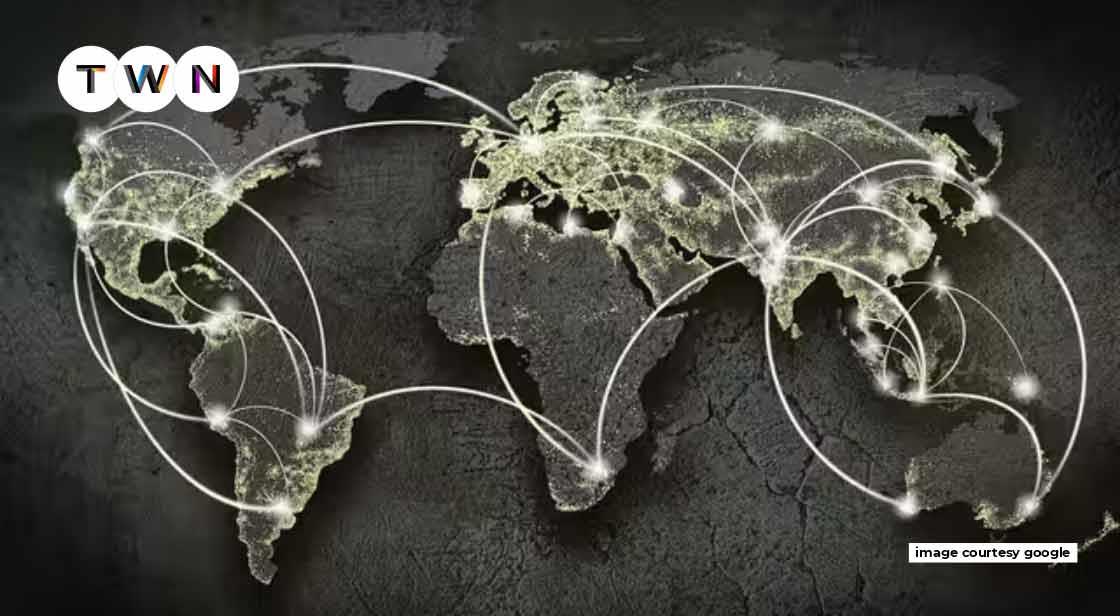The State of Globalization in 2022

Blog Post
As businesses consider changes to their global business strategies, it is critical to recognize how much continuity remains even in the midst of excruciating change. The notion of a world in which operational prosperity alone moves determinants of international flows has always been a myth. Globalization has always been an inconsistent activity, with cross-national differences and conflicts around the world dampening international flows significantly. In this article, we will talk about the state of globalization that we have witnessed in 2022. #TWN
As businesses consider changes to their global business strategies, it is critical to recognize how much continuity remains even in the midst of excruciating change. The notion of a world in which operational prosperity alone moves determinants of international flows has always been a myth. Globalization has always been an inconsistent activity, with cross-national differences and conflicts around the world dampening international flows significantly. That's why, even before the current Ukrainian crisis, only about 20% of the world's gross domestic product ended up in a country other than the one where it was produced. Global strategies must be revised as the landscape shifts, but managers must avoid the expensive overreactions that often accompany major shocks to globalization.
In this article, we will talk about the state of globalization that we have witnessed in 2022.
Russia's invasion of Ukraine has prompted new forecasts that the end of globalization is near, similar to what we saw at the start of the Covid-19 pandemic. However, global cross-border transactions have increased significantly since the beginning of the pandemic. In our opinion, the war will probably decrease many types of international commercial activity and cause some geographic shifts, but it will not fail international flows. To comprehend why — and to allow you to think through the implications for your company — you must first set benchmarks of how global streams were trending prior to the war. The DHL Global Connectedness Index measures globalization through international trade, capital, details, and people flow. We examine the most recent trends in those four categories of flows, as well as early indications of how the battle might alter their future trajectories.
Recent Trends Showing the State in Globalization in 2022
Trade Flows
After plummeting at the start of the pandemic, global goods trade recovered to pre-pandemic levels by the end of this decade and was making new records by early 2021. Despite breakdowns in global supply chains, the main reason trade roared back so definitively was a surge in demand for traded goods.
Rocketing demand for goods only could lead to more trade and usage to the extent that supply can increase to meet it. Supply did expand, but it was constrained by both acceptable bounds on how rapidly potential can be increased and by the pandemic's unique circumstances, such as large shifts in product demand, unexpected plant and port closures, labor shortages, and late deliveries. Without supply constraints, global goods trade could have grown by several percentage points more now than it did in 2021. Before the war, exchange was expected to expand rapidly in 2022 and 2023. The number of goods bought and sold (world trade volume) is still expected to grow this year, but at a slower rate than previously predicted, owing to both the war and Covid-19 outbreaks in Asia. If demand reverts from manufacturing to services, trade growth will be reduced. Meanwhile, expect higher growth in the dollar value of global trade, aided by high commodity prices. The following pattern can be seen in Japan's most recent import data: In February 2022, the country imported less, but the price of its imports went way up.
Capital Flows
International capital flows, like trade, plummeted at the start of the pandemic and have since recovered. For the first time since 2005, foreign direct investment (FDI) flows fell below $1 trillion in 2020. Unsurprisingly, a record degree of wealth ambiguity has prompted firms to postpone making new investments. More than 400 international companies have left Russia as a result of the conflict in Ukraine, though this has not yet contributed to a wave of real asset divestments, which would decrease FDI. Because Russia accounts for only 1% of global inward FDI stocks, the war's main impact on multinational corporate investment is likely to be its deleterious macroeconomic consequences. The war may reduce global GDP growth by more than one percentage point over the next year, and FDI tends to suffer during periods of slower growth as companies focus on protecting their existing market rather than moving into new ones.
Enough talks about the flow that results in market diversification in 2022. Let us now focus on some current economic trends that came into existence due to this globalization in 2022.
Current Economic Trends in 2022
Prices should stabilize, and the financial system should return to pre-pandemic levels in 2022, even as we proceed to deal with new coronavirus variants. Here are some of the economic trends that might shape the coming year.
The resumption of the economy has been preceded by supply chain bottlenecks, labor shortages, and the maximum rate of inflation in three decades. The pandemic's dislocations were clearly still present in 2021, but the coming year may see a gradual stabilization as prices, customer needs, and monetary policy return to equilibrium. Let's know about some current economic trends in 2022.
The Tale of Inflation in Two Halves of the Year
Strong inflationary pressures may persist through the first half of 2022, only to relieve as the economy returns to balance.
- Prices did not begin rapidly rising until the early summer of 2021, so year-over-year statistics will be higher through the first quarter, even if prices stabilize sooner.
- Shipping bottlenecks are starting to ease, but it will be months before imported elements like microchips make their way into automobiles, electronics, and other finished products. Meanwhile, supply constraints may continue to drive up retail prices for basic goods.
- By the second half of 2022, the flow of products should be back to normal, reducing inflationary pressures significantly.
- The Federal Reserve's Federal Open Market Committee defined lengthy inflationary expectations as "well-anchored" at the 2 % target in a November announcement.
Untangled Supply Chains
With overcrowded ports and disrupted shipments, we're becoming more aware of previously unseen friction points in the global production chain. Microprocessor supply, for example, has been confirmed to be inelastic. A surge in demand for automobiles, appliances, and electronic parts quickly outpaced the world's chip foundries' productive capacity.
The good news is that shipping backlogs are already subsiding. The waiting period for ships docking at the Harbor of L.A. is decreasing, and more ships are leaving loaded from U.S. ports. Solid advancement, but it will take some time before retail goods flow returns to normal.
Workers Returned, but Labor Shortage may Continue
Strong labor demand should lure the last of the pandemic's workforce dropouts to return to work, but demographic trends could lead to a long-term shortage of workers. Even restoring pre-pandemic labor-force participation rates and wages will not reverse the aging of the American workforce or the decelerating of immigration flows.
- Between 4 and 5 million employees have yet to come back to work.
- Some are having difficulty finding childcare, while others with chronic conditions may believe their workplaces are still dangerous.
- With kids back in school and booster shots commonly accessible, the robust labor market should entice many workers to return.
- With 10 million unfilled positions and a record-high 30 percent of small businesses planning wage increases, the labor market should be highly favorable for workers rejoining in 2022.
- The labor force has been increasing more slowly than in previous decades for more than a decade. As workers become scarce, businesses may be forced to adopt labor-enhancing technologies.
Solid Demand Foundations
In 2022, economic demand will be driven by strong domestic balance sheets, depleted inventories, and federal infrastructure spending. Private consumption expenditures have increased by 12% since 2020, and the disposable income-to-household net worth ratio is approaching a record high.
- Government stimulus, combined with booming equity and property markets, has resulted in an extra $2.5 trillion in household savings. Strong household budgets should lead to another year of strong consumer demand in 2022.
- Retail inventories were depleted due to supply chain disruptions, but as merchandise flow resumes, stockpiling bottlenecks could boost the requirement for manufactured products by 6%.
- The recently approved federal infrastructure law commits to funding a wide range of infrastructure projects over the next decade.
Economical Crash in 2022
The Economical Crash in 2022 is the result of various events that happened recently and will affect the global market for a long time.
- The Russian invasion of Ukraine has increased uncertainty and shaken commodity markets.
- The pandemic is still going on, thanks to the Omicron variant. Milder health effects and advancements in vaccination have allowed markets to remain more accessible than in earlier waves.
- On the back of continued domestic demand recovery and solid exports, the region's GDP will grow by 5.2 percent in 2022 and 5.3 percent in 2023. Inflation is expected to reach 3.7 percent in 2022 and 3.1 % in 2023.
- The aggression of Russia's invasion of Ukraine, financial instability caused by the Fed's aggressive stiffening, the rise of new, more lethal COVID-19 variants, and interruptions associated with the People's Republic of China's (PRC's) existing epidemics are all risks.
Conclusion
All these points and stats show the current state of globalization in 2022 and how it will be in the coming years. We hope we were able to provide you with some valuable insights and data that might trigger your curiosity about the current global event.
You May Like
EDITOR’S CHOICE












